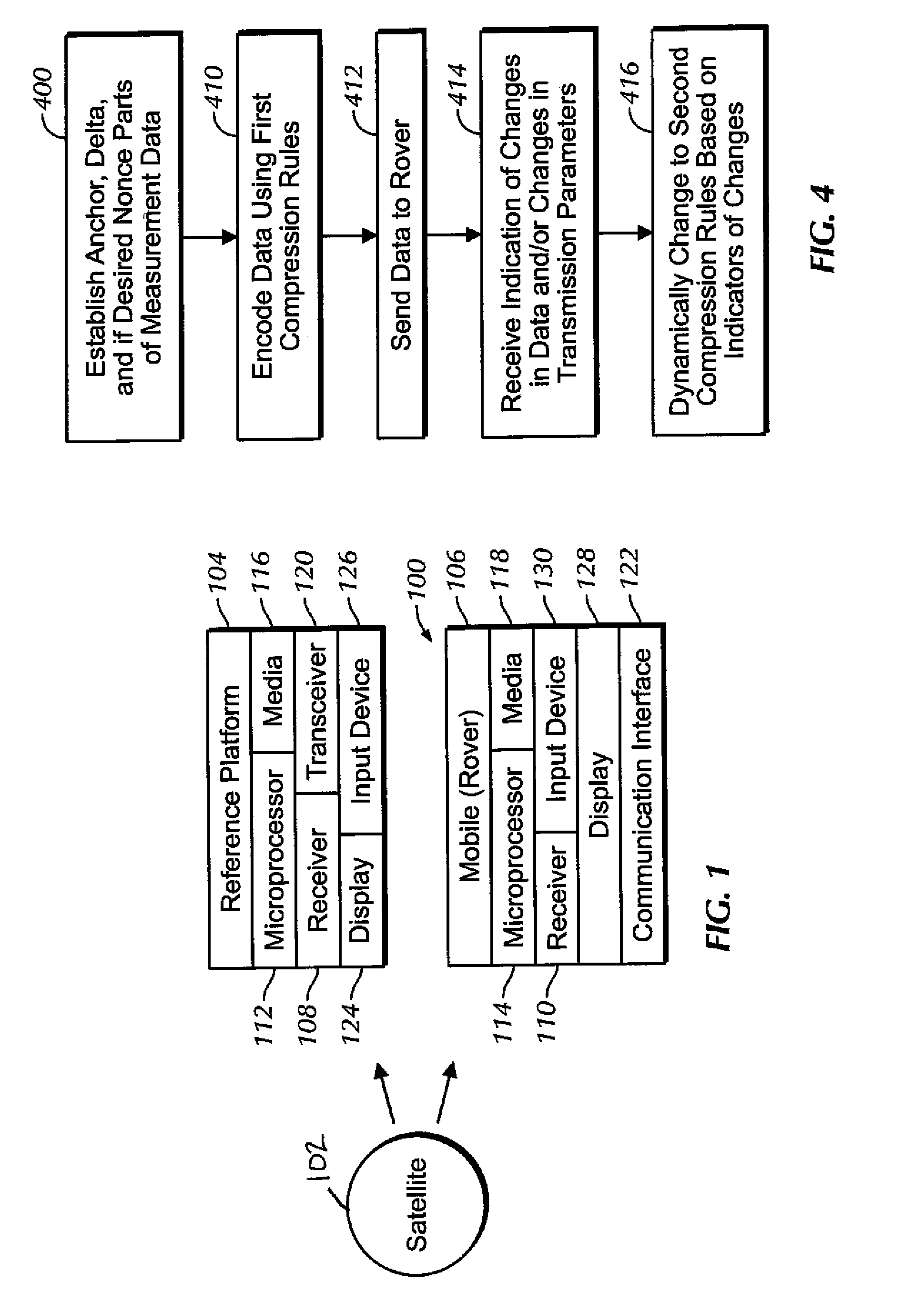Method and apparatus for reducing satellite position message payload by adaptive data compression techniques
- Summary
- Abstract
- Description
- Claims
- Application Information
AI Technical Summary
Benefits of technology
Problems solved by technology
Method used
Image
Examples
an example
[0144]The data presented Table 1 are used to formulate a non-limiting example of principles discussed above. The first column is a count of the seconds from an arbitrary starting point at 5:30 AM, the second column contains the Time of Day (TOD) in seconds from GPS midnight, while the final column contains the observed pseudorange from the observer's position to the satellite, at that time, in units of meters. The data follow the convention of RINEX with a resolution of 0.001 meter, even though the original source data (RTCM 3.x message in this case) can have a different resolution (e.g., 2 cm).
TABLE 1Representative Pseudorange values froma satellite for a segment of the orbitClockC1TimeTODMeasurement(sec)(sec)(meters)−3019,77025,154,990.420−2919,77125,154,287.540−2819,77225,153,584.620−2719,77325,152,881.640−2619,77425,152,178.660−2519,77525,151,475.620−2419,77625,150,772.560−2319,77725,150,069.440−2219,77825,149,366.260−2119,77925,148,663.100−2019,78025,147,959.900−1919,78125,147,...
PUM
 Login to View More
Login to View More Abstract
Description
Claims
Application Information
 Login to View More
Login to View More - R&D
- Intellectual Property
- Life Sciences
- Materials
- Tech Scout
- Unparalleled Data Quality
- Higher Quality Content
- 60% Fewer Hallucinations
Browse by: Latest US Patents, China's latest patents, Technical Efficacy Thesaurus, Application Domain, Technology Topic, Popular Technical Reports.
© 2025 PatSnap. All rights reserved.Legal|Privacy policy|Modern Slavery Act Transparency Statement|Sitemap|About US| Contact US: help@patsnap.com



